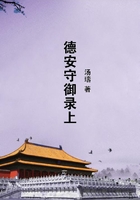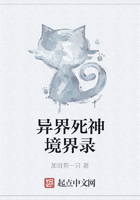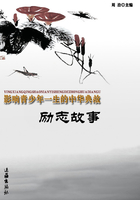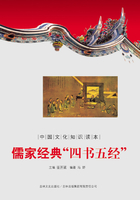In her anxiety to get out, how will she set about her release? The way is blocked by the nearest cocoons, as yet intact. To clear herself a passage through the string of those cocoons would mean to exterminate the remainder of the brood; the deliverance of one would mean the destruction of all the rest. Insects are notoriously obstinate in their actions and unscrupulous in their methods. If the Bee at the bottom of the shaft wants to leave her lodging, will she spare those who bar her road?
The difficulty is great, obviously; it seems insuperable. Thereupon we become suspicious: we begin to wonder if the emergence from the cocoon, that is to say, the hatching, really takes place in the order of primogeniture. Might it not be--by a very singular exception, it is true, but one which is necessary in such circumstances--that the youngest of the Osmiae bursts her cocoon first and the oldest last;in short, that the hatching proceeds from one chamber to the next in the inverse direction to that which the age of the occupants would lead us to presume? In that case, the whole difficulty would be removed: each Osmia, as she rent her silken prison, would find a clear road in front of her, the Osmiae nearer the outlet having gone out before her. But is this really how things happen? Our theories very often do not agree with the insect's practice; even where our reasoning seems most logical, we should be more prudent to see what happens before venturing on any positive statements. Leon Dufour was not so prudent when he, the first in the field, took this little problem in hand. He describes to us the habits of an Odynerus (Odynerus rubicola, DUF.) who piles up clay cells in the shaft of a dry bramble-stalk; and, full of enthusiasm for his industrious Wasp, he goes on to say:
'Picture a string of eight cement shells, placed end to end and closely wedged inside a wooden sheath. The lowest was undeniably made first and consequently contains the first-laid egg, which, according to rules, should give birth to the first winged insect. How do you imagine that the larva in that first shell was bidden to waive its right of primogeniture and only to complete its metamorphosis after all its juniors? What are the conditions brought into play to produce a result apparently so contrary to the laws of nature? Humble yourself in the presence of the reality and confess your ignorance, rather than attempt to hide your embarrassment under vain explanations!
'If the first egg laid by the busy mother were destined to be the first-born of the Odyneri, that one, in order to see the light immediately after achieving wings, would have had the option either of breaking through the double walls of his prison or of perforating, from bottom to top, the seven shells ahead of him, in order to emerge through the truncate end of the bramble-stem. Now nature, while refusing any way of escape laterally, was also bound to veto any direct invasion, the brutal gimlet-work which would inevitably have sacrificed seven members of one family for the safety of an only son.
Nature is as ingenious in design as she is fertile in resource, and she must have foreseen and forestalled every difficulty. She decided that the last-built cradle should yield the first-born child; that this one should clear the road for his next oldest brother, the second for the third and so on. And this is the order in which the birth of our Odyneri of the Brambles actually takes place.'
Yes, my revered master, I will admit without hesitation that the bramble-dwellers leave their sheath in the converse order to that of their ages: the youngest first, the oldest last; if not invariably, at least very often. But does the hatching, by which I mean the emergence from the cocoon, take place in the same order? Does the evolution of the elder wait upon that of the younger, so that each may give those who would bar his passage time to effect their deliverance and to leave the road clear? I very much fear that logic has carried your deductions beyond the bounds of reality. Rationally speaking, my dear sir, nothing could be more accurate than your inferences; and yet we must forgo the theory of the strange inversion which you suggest. None of the Bramble-bees with whom I have experimented behaves after that fashion. I know nothing personal about Odynerus rubicola, who appears to be a stranger in my district;but, as the method of leaving must be almost the same when the habitation is exactly similar, it is enough, I think, to experiment with some of the bramble-dwellers in order to learn the history of the rest.
My studies will, by preference, bear upon the Three-pronged Osmia, who lends herself more readily to laboratory experiments, both because she is stronger and because the same stalk will contain a goodly number of her cells. The first fact to be ascertained is the order of hatching. I take a glass tube, closed at one end, open at the other and of a diameter similar to that of the Osmia's tunnel. In this I place, one above the other, exactly in their natural order, the ten cocoons, or thereabouts, which I extract from a stump of bramble. The operation is performed in winter. The larvae, at that time, have long been enveloped in their silken case. To separate the cocoons from one another, I employ artificial partitions consisting of little round disks of sorghum, or Indian millet, about half a centimetre thick. (About one-fifth of an inch.--Translator's Note.)This is a white pith, divested of its fibrous wrapper and easy for the Osmia's mandibles to attack. My diaphragms are much thicker than the natural partitions; this is an advantage, as we shall see. In any case, I could not well use thinner ones, for these disks must be able to withstand the pressure of the rammer which places them in position in the tube. On the other hand, the experiment showed me that the Osmia makes short work of the material when it is a case of drilling a hole through it.















